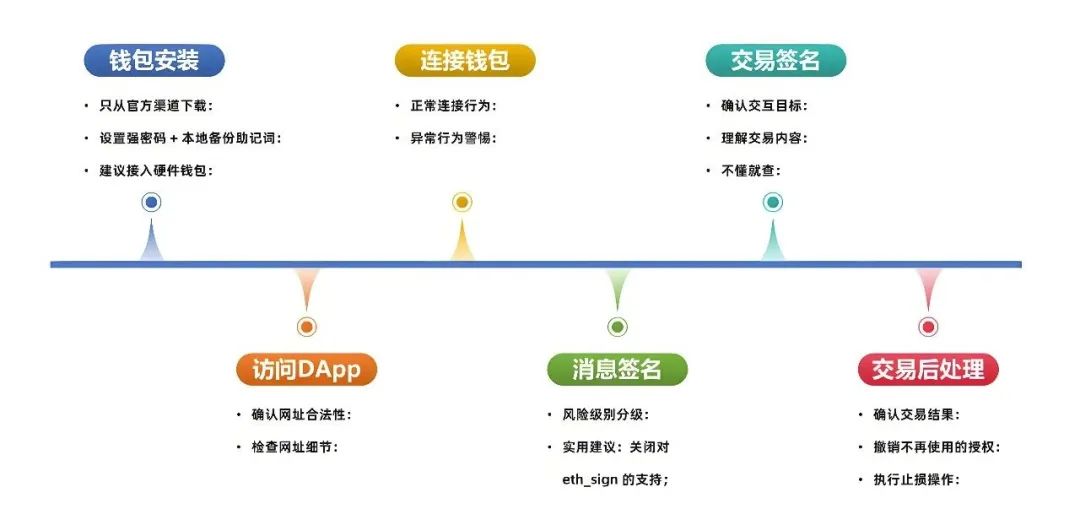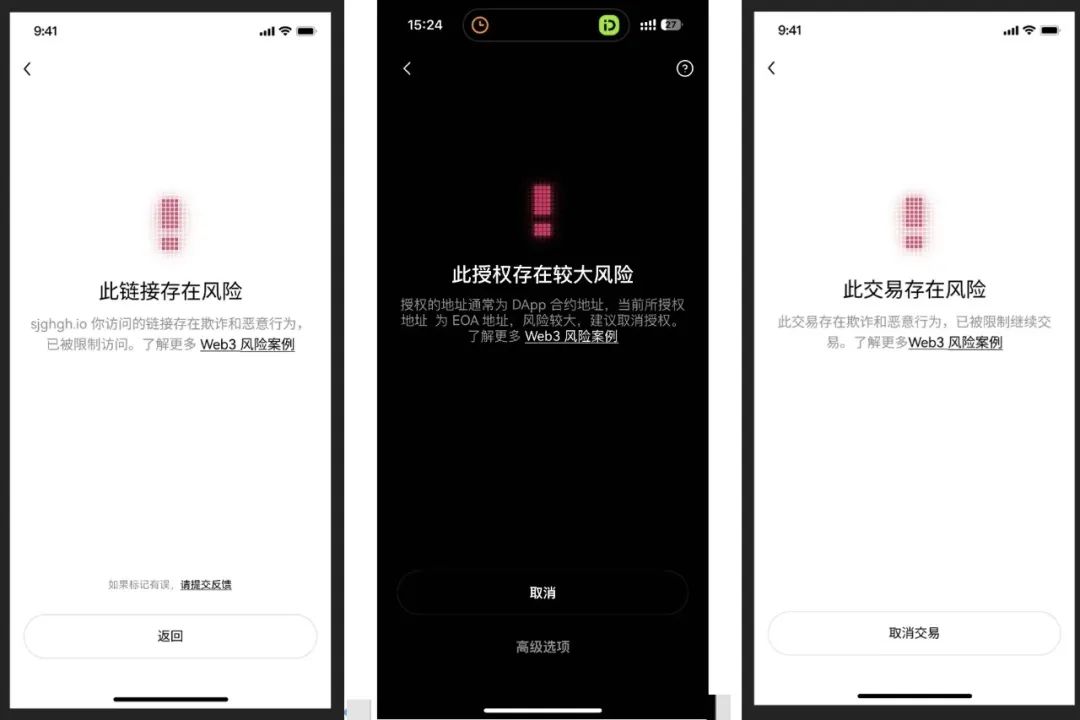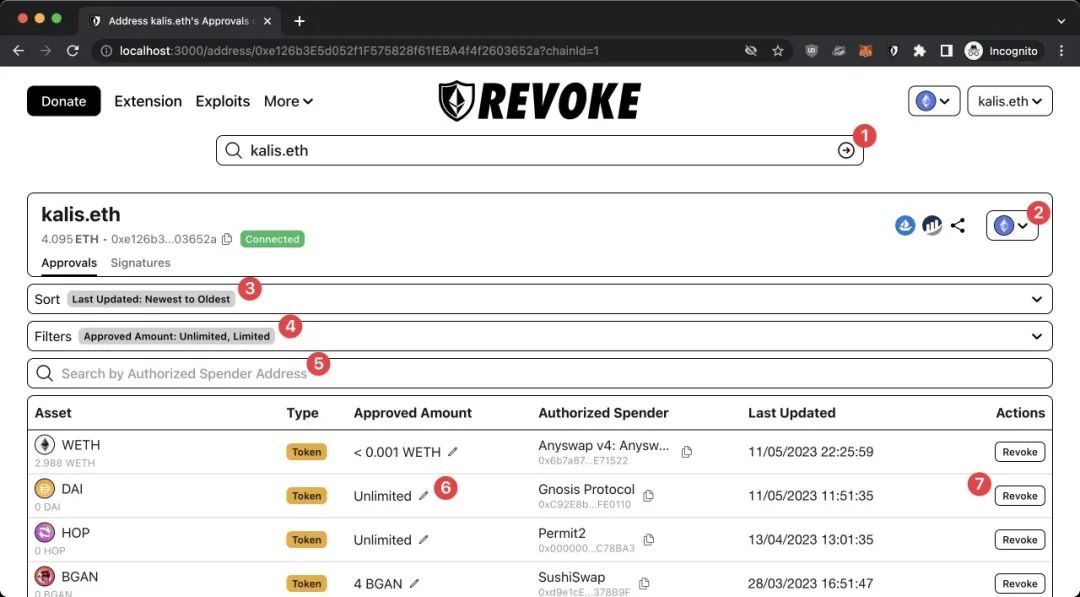With the continuous expansion of the on-chain ecosystem, on-chain transactions have gradually evolved into an indispensable daily operation for Web3 users. User assets are accelerating their migration from centralized platforms to decentralized networks, a trend that also means the responsibility for asset security is shifting from the platform to the users themselves. In an on-chain environment, users need to be responsible for every interaction, whether it is importing a wallet, accessing a DApp, or signing authorizations and initiating transactions. Any blind signing or operational error could pose a security risk, leading to serious consequences such as private key leakage, authorization abuse, or phishing attacks.
Although mainstream wallet plugins and browsers are gradually integrating features like phishing detection and risk alerts, relying solely on passive defenses from tools is still insufficient to completely avoid risks in the face of increasingly complex attack methods. To help users more clearly identify potential risk points in on-chain transactions, our security team has compiled a systematic on-chain transaction security guide based on practical experience, outlining high-risk scenarios throughout the entire process, along with protective suggestions and tool usage tips, to assist every Web3 user in building a "self-controllable" security defense.
Core principles of secure transactions:
- Reject blind signing: Never sign transactions or messages that you do not understand.
- Verify repeatedly: Always verify the accuracy of relevant information multiple times before proceeding with any transaction.

I. Security Transaction Recommendations
Secure transactions are key to protecting digital assets. Research shows that using secure wallets and two-factor authentication (2FA) can significantly reduce risks. Here are specific recommendations:
- Use secure wallets:
Choose reputable wallet providers, such as hardware wallets like Ledger or Trezor, or software wallets like Metamask. Hardware wallets provide offline storage, reducing the risk of online attacks, making them suitable for storing large assets.
- Double-check transaction details:
Before confirming a transaction, always verify the recipient address, amount, and network (e.g., ensure you are using the correct chain, such as Ethereum or BNB Chain) to avoid losses due to input errors.
- Enable two-factor authentication (2FA):
If the trading platform or wallet supports 2FA, be sure to enable it to enhance account security, especially when using hot wallets.
- Avoid using public Wi-Fi:
Do not conduct transactions over public Wi-Fi networks to prevent phishing attacks and man-in-the-middle attacks.
II. How to Conduct Secure Transactions
A complete DApp transaction process involves multiple steps: wallet installation, accessing the DApp, connecting the wallet, message signing, transaction signing, and post-transaction processing. Each step carries certain security risks, and the following will introduce precautions to take during actual operations.

Note: This discussion mainly focuses on the secure interaction process on Ethereum and various EVM-compatible chains; tools and specific technical details for other non-EVM chains may differ.
1: Wallet Installation:
Currently, the mainstream way to interact with DApps is through browser plugin wallets. Mainstream wallets used on EVM chains include MetaMask.
When installing a Chrome plugin wallet, ensure that you download it from the Chrome Web Store to avoid installing wallet software with backdoors from third-party websites. Users with the means are advised to use hardware wallets in conjunction to further enhance overall security in private key management.
When backing up the wallet seed phrase (usually a recovery phrase of 12-24 words), it is recommended to store it in a secure place, away from digital devices (e.g., write it down on paper and keep it in a safe).
2: Accessing DApps
Web phishing is a common tactic in Web3 attacks. A typical case involves luring users to phishing DApp applications under the guise of an airdrop, prompting them to sign token authorizations, transfer transactions, or token authorization signatures after connecting their wallets, leading to asset loss.
Therefore, users need to remain vigilant when accessing DApps to avoid falling into web phishing traps.
Before accessing a DApp, confirm the correctness of the URL. Recommendations include:
- Avoid accessing directly through search engines: Phishing attackers may purchase ad space to rank their phishing sites higher.
- Avoid clicking links in social media: URLs posted in comments or messages may be phishing links.
- Repeatedly confirm the correctness of the DApp URL: Cross-check through DApp markets like DefiLlama, official social media accounts of the project, etc.
- Add secure websites to your browser favorites: Access them directly from favorites in the future.
After opening the DApp webpage, also perform a security check on the address bar:
- Check if the domain name and URL resemble a counterfeit.
- Check if it is an HTTPS link; the browser should display a lock icon.
Currently, mainstream plugin wallets also integrate certain risk alert features that display strong warnings when accessing risky websites.

3: Connecting Wallets
After entering the DApp, the wallet connection operation may be triggered automatically or by actively clicking "Connect." The plugin wallet will perform some checks and display information related to the current DApp.
After connecting the wallet, typically, the DApp will not actively prompt the plugin wallet unless the user performs other actions. If the website frequently prompts the wallet to sign messages or transactions after logging in, or continues to pop up signing requests even after refusing to sign, it is likely a phishing site and should be handled with caution.
4: Message Signing
In extreme cases, for example, if an attacker compromises the official website of the protocol or conducts front-end hijacking attacks, replacing the page content, ordinary users may find it difficult to discern the security of the website in such scenarios.
At this point, the signing by the plugin wallet serves as the final barrier for users to protect their assets. As long as malicious signatures are rejected, users can safeguard their assets from loss. Users should carefully review the content of any message and transaction they sign, rejecting blind signing to avoid asset loss.
Common types of signatures include:
- eth_sign: Signing hashed data.
- personal_sign: Signing plaintext information, most commonly seen during user login verification or permission agreement confirmation.
- eth_signTypedData (EIP-712): Signing structured data, commonly used for ERC20 Permits, NFT listings, etc.
5: Transaction Signing
Transaction signing is used to authorize blockchain transactions, such as transfers or calling smart contracts. Users sign with their private keys, and the network verifies the validity of the transaction. Many plugin wallets will decode and display relevant content for messages awaiting signature, and it is essential to adhere to the principle of not signing blindly. Security recommendations include:
- Carefully check the recipient address, amount, and network to avoid errors.
- For large transactions, it is advisable to sign offline to reduce the risk of online attacks.
- Pay attention to gas fees, ensuring they are reasonable to avoid scams.
For users with a certain level of technical knowledge, common manual inspection methods can also be employed: by copying the target contract address to blockchain explorers like Etherscan for review, focusing on whether the contract is open-source, if there have been a large number of recent transactions, and whether Etherscan has marked the address with an official or malicious label.
6: Post-Transaction Processing
Avoiding phishing websites and malicious signatures does not mean everything is fine; risk management is still necessary after transactions.
After a transaction, promptly check the on-chain status of the transaction to confirm whether it aligns with the expected state at the time of signing. If any anomalies are detected, take timely actions such as asset transfers or revoking authorizations to mitigate losses.
ERC20 Approval management is also crucial. In some cases, users authorized tokens for certain contracts, and years later, those contracts were attacked, with attackers exploiting the token authorization limits to steal user funds. To prevent such situations, our security team recommends that users follow these standards for risk prevention:
- Minimize authorizations. When authorizing tokens, limit the authorization to the necessary amount based on the transaction's needs. For example, if a transaction requires authorization of 100 USDT, then the authorization amount should be limited to 100 USDT, rather than using the default unlimited authorization.
- Timely revoke unnecessary token authorizations. Users can log in to revoke.cash to check the authorization status of the corresponding address and revoke authorizations for protocols that have not interacted for a long time, preventing potential vulnerabilities from being exploited to cause asset loss.

III. Fund Isolation Strategies
With risk awareness and sufficient risk prevention measures in place, it is also advisable to implement effective fund isolation strategies to reduce the extent of potential losses in extreme situations. Recommended strategies include:
- Use Gnosis Safe multi-signature wallets or cold wallets to store large assets;
- Use plugin wallets or EOA wallets (like MetaMask) as hot wallets for daily interactions;
- Regularly change hot wallet addresses to prevent continuous exposure to risky environments.
If you accidentally fall victim to phishing, we recommend immediately taking the following measures to minimize losses:
- Use tools like Revoke.cash to cancel high-risk authorizations;
- If you signed a permit signature but the assets have not yet been transferred, immediately initiate a new signature to invalidate the old signature nonce;
- If necessary, quickly transfer remaining assets to a new address or cold wallet.
IV. How to Safely Participate in Airdrop Activities
Airdrops are a common method for blockchain projects to promote themselves, but they also carry risks. Here are a few suggestions:
- Research the project background: Ensure the project has a clear white paper, public team information, and community reputation;
- Use dedicated addresses: Register a dedicated wallet and email to isolate the main account's risk;
- Be cautious when clicking links: Obtain airdrop information only through official channels, avoiding suspicious links on social platforms;
V. Recommendations for Choosing and Using Plugin Tools
The content of blockchain security guidelines is extensive, and it may not be possible to conduct detailed checks for every interaction. Choosing secure plugins is crucial, as they can assist us in making risk judgments. Here are specific recommendations:
- Trusted extensions: Use widely used browser extensions like Metamask (for the Ethereum ecosystem). These plugins provide wallet functionality and support DApp interactions.
- Check ratings: Before installing a new plugin, check user ratings and installation numbers. High ratings and a large number of installations usually indicate that the plugin is more reliable, reducing the risk of malicious code.
- Keep updated: Regularly update your plugins to obtain the latest security features and fixes. Outdated plugins may contain known vulnerabilities that can be exploited by attackers.
VI. Conclusion
By following the above security transaction guidelines, users can interact more confidently in the increasingly complex blockchain ecosystem, effectively enhancing asset protection capabilities. Although blockchain technology is characterized by decentralization and transparency, it also means that users must independently address multiple risks, including signature phishing, private key leakage, and malicious DApps.
To achieve true security on-chain, relying solely on tool alerts is far from sufficient; establishing a systematic security awareness and operational habits is key. By using hardware wallets, implementing fund isolation strategies, regularly checking authorizations, and updating plugins, and adhering to the principles of "multiple verifications, rejecting blind signing, and fund isolation" in transaction operations, users can truly achieve "freedom and security on-chain."
免责声明:本文章仅代表作者个人观点,不代表本平台的立场和观点。本文章仅供信息分享,不构成对任何人的任何投资建议。用户与作者之间的任何争议,与本平台无关。如网页中刊载的文章或图片涉及侵权,请提供相关的权利证明和身份证明发送邮件到support@aicoin.com,本平台相关工作人员将会进行核查。




